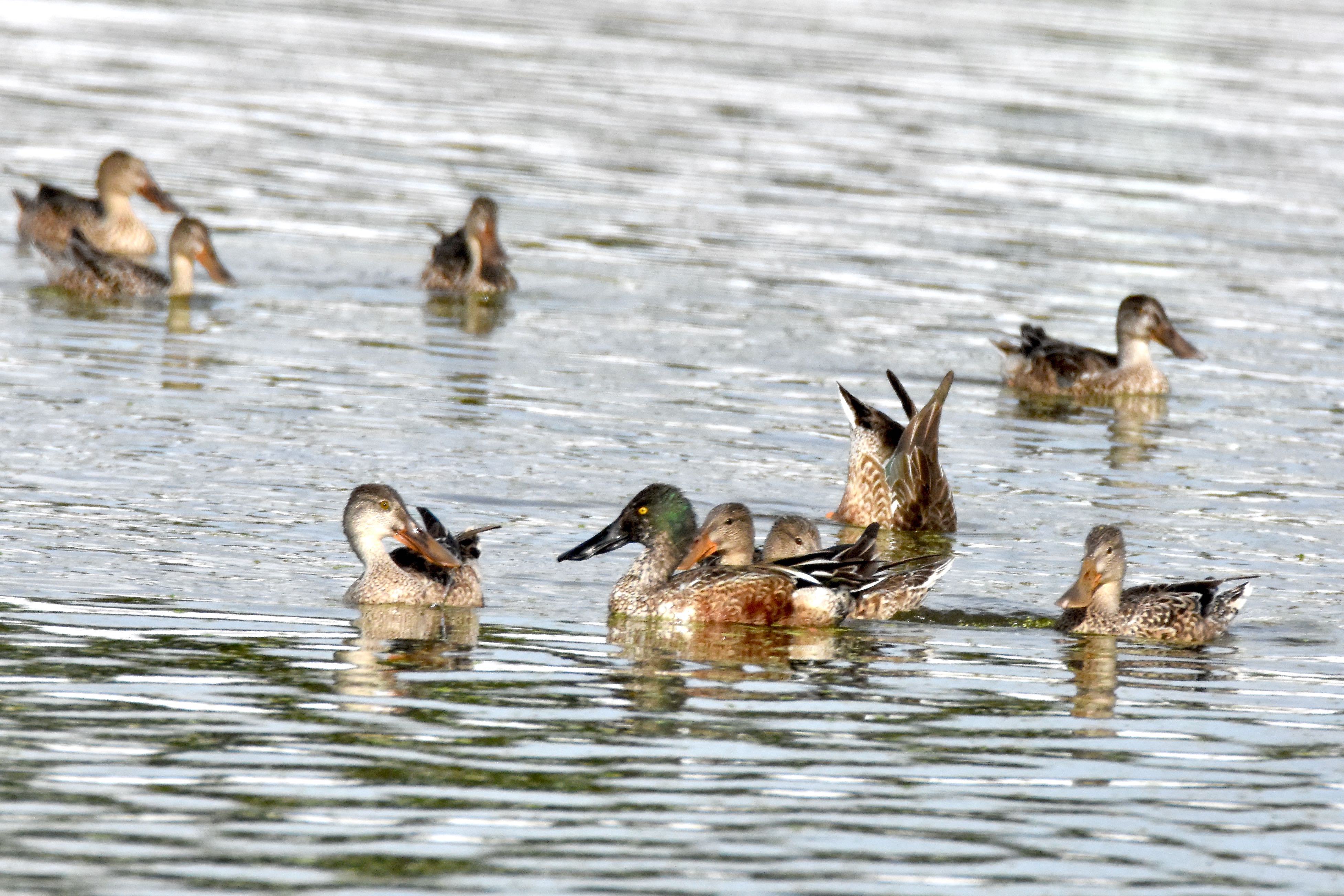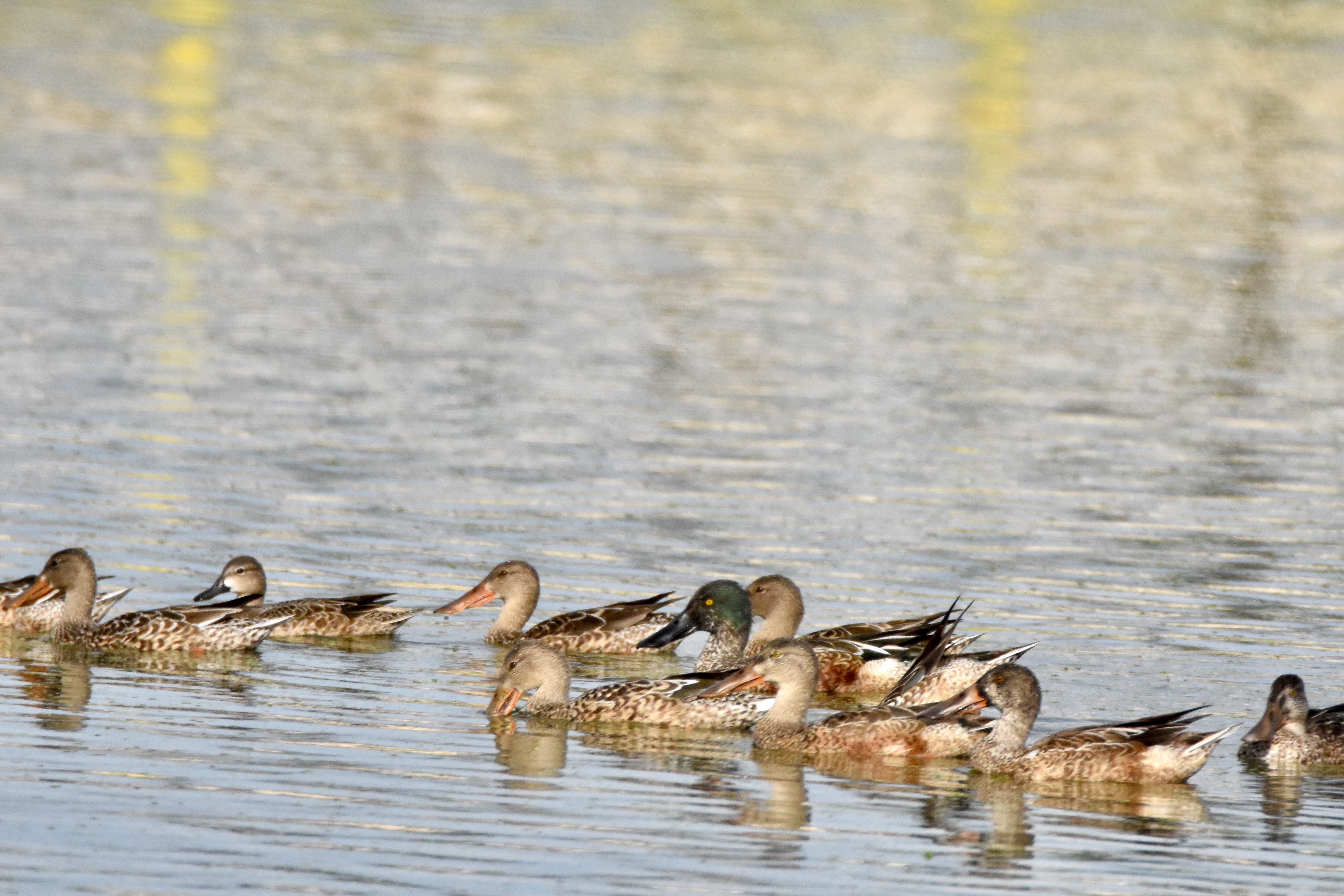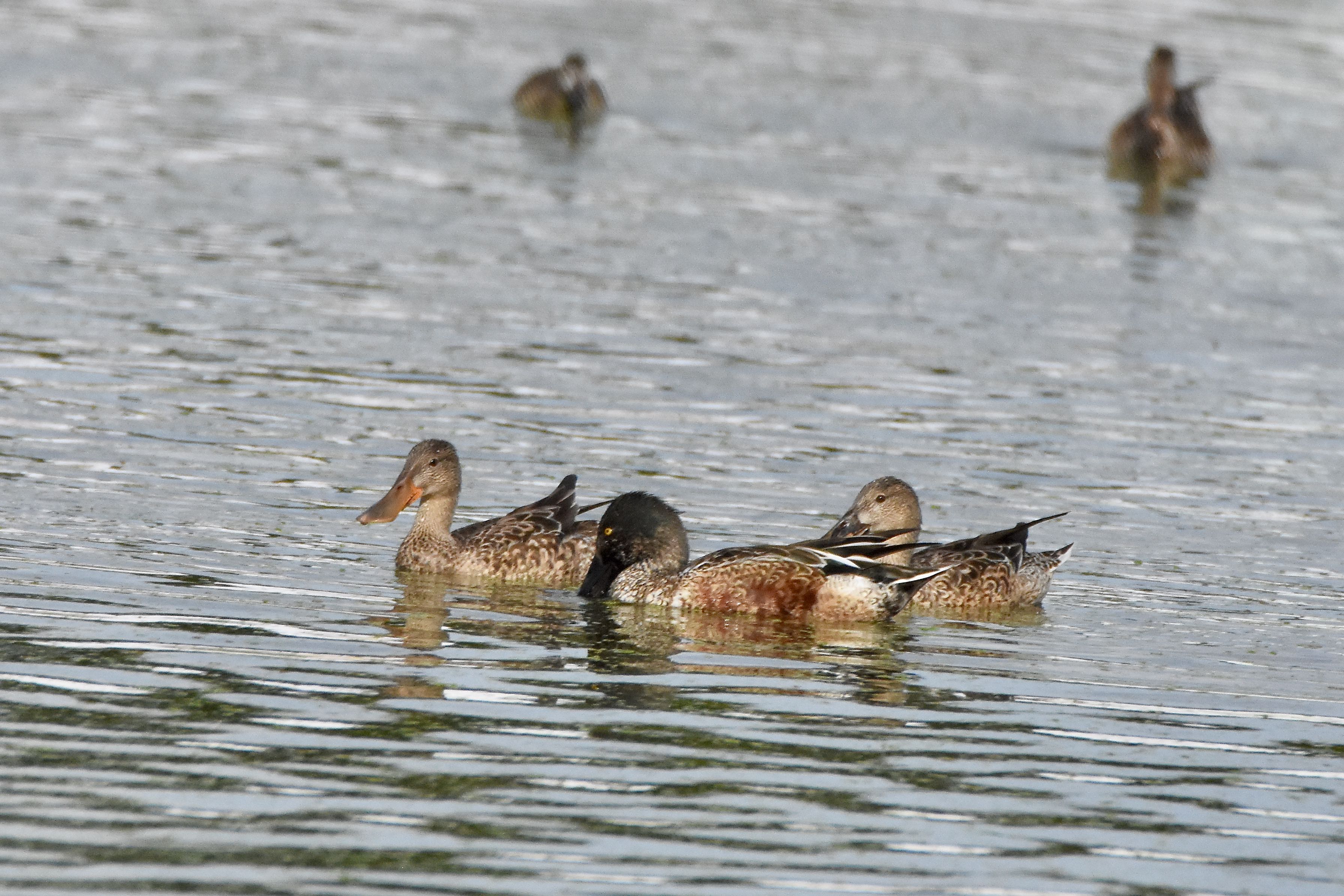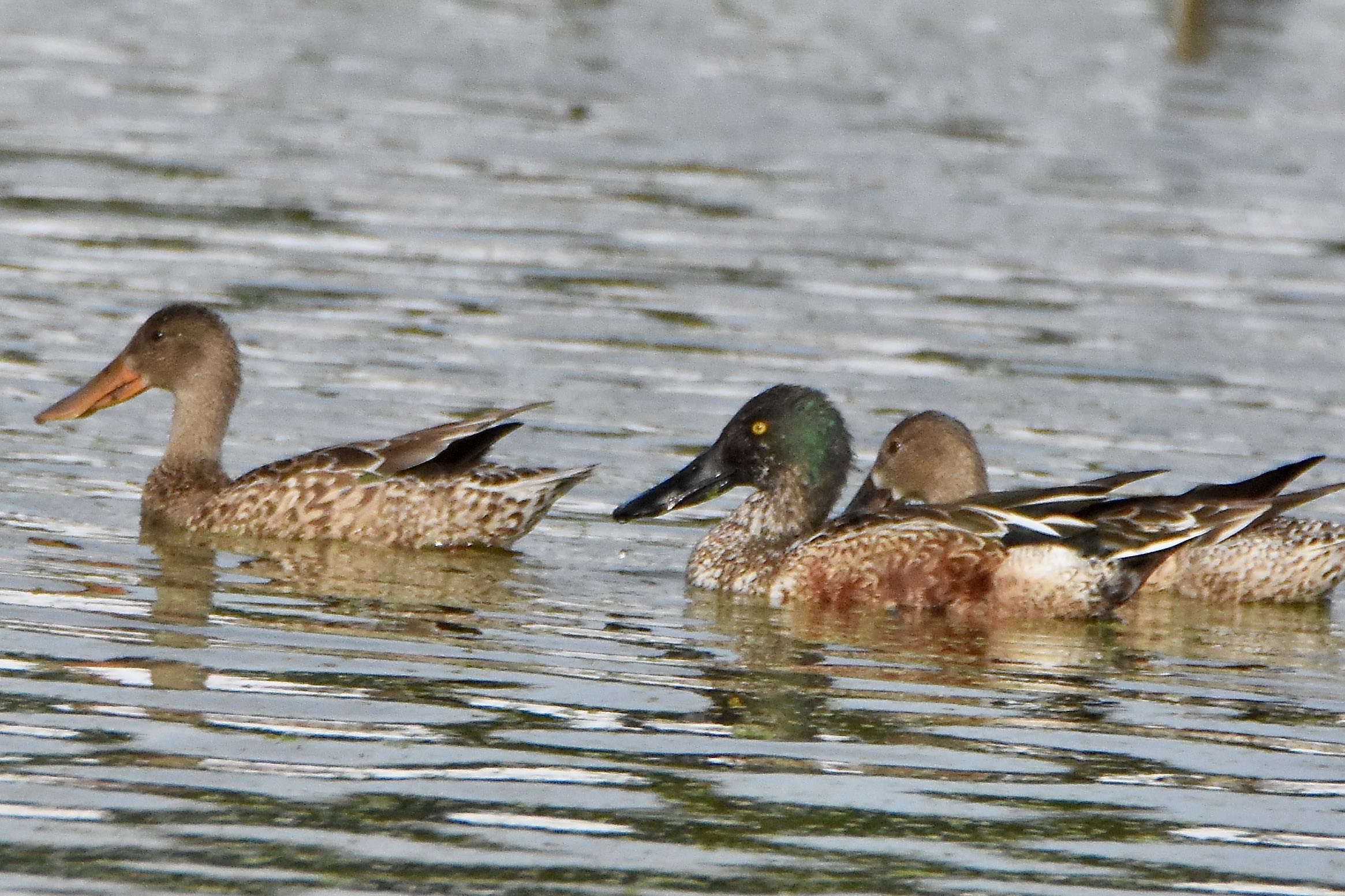
Northern shoveler, photographed at Peaceful Waters Preserve, Wellington, Palm Beach County, in January 2017.
There is no way around it. The northern shoveler's "honker" is absolutely huge, the duck's scientific name perfectly descriptive: Spatula clypeata. Spatula indeed.
The bill is big enough and shaped so differently than those of other ducks that when you see it, you pretty much know what you're looking at regardless of any other clues. It's almost like a name tag.
Northern shovelers are winter visitors to Florida, spending summers as far north as Alaska's Arctic shores. Their range extends through the Yukon and Canada's central provinces, into parts of the American Rocky Mountains. There's also a population that summers through the Great Lakes region and along the St. Lawrence River. They'll winter along both Atlantic and Pacific coastlines, south into Mexico, the Caribbean, Central America and to Colombia. It really has a global presence, breeding and wintering in Europe and Asia, from Britain to China and the Philippines. It also winters in parts of Africa, and is a vagrant visitor to Australia.
Breeding males have a dark bill, iridescent green head and neck, white breast and cinnamon belly and flanks, with black and white in the wings. Females are mottled brown, have the same large bill, although it is orange. They are fairly large as ducks go, reaching 19 inches in lenght and wingspans of 30 inches.
The bill can be two-and-a-half inches long, twice as wide at the tip as it is at the base. It also comes equipped with comb-like structures along the outer edges called lamellae, which filter food. Water is sucked into the bill at the tip then pushed out the sides by their tongue, with bits of food remaining.
The lamellae will filter small crustaceans, mollusks, seeds, bits of vegetation, and aquatic bugs. Northern shovelers will take advantage of the activities of other ducks, eating items that they have been churned up as they swim. They'll also dabble for food and even dive. In summer, northern shovelers take to shallow pools of water, ponds, lakes and marshes where there is both good cover and dry land — they are ground nesters. Winter habitat might be a marsh or swamp, either fresh or brackish water but not saltwater. They've been known to take to sewage treatment ponds, which is where the shovelers on this page were found, adjacent to Peaceful Waters Sanctuary .
Nesting season for shovelers is between April and June. Females scrape out a shallow hole by twisting their bodies at a dry spot near a marshy lake. She'll lay between eight and 12 eggs, which will require 22 to 25 days of incubation before hatching. All sitting is done by mom. In fact, while mom sits, dad becomes less and less interested in family life and will wander off, sometimes finding a second mate. Eventually, males will molt and won't be able to fly for several weeks. Meanwhile, the kids are ready to walk and swim and find food on their own shortly after hatching but will stick close to mom's protective wings until they're ready to fly, about two months later. Northern shovelers are generally socialable birds except during nesting season. They're often seen in small groups, as the ones shown in these pictures, but they'll often migrate in large numbers.
Northern shovelers are members of Anatidae, the family of ducks and geese. They were formerly known under the scientific name of Anas clypeata.
Click on photo for larger image
Links for Northern Shoveler



